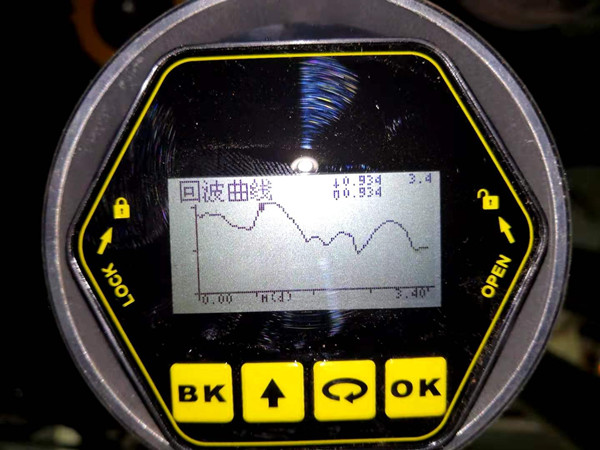Radar level meters are widely used due to their non-contact measurement method, high accuracy and reliability. They measure the level by emitting electromagnetic waves and receiving their reflected echoes.
However, in the process of using radar level meters, users often encounter a problem: what does the magnitude of the echo intensity value depend on? This article will explore in depth the main factors that affect the echo intensity of radar level meters.

First, the dielectric constant of the medium has a significant effect on the echo intensity. The dielectric constant is a physical quantity that describes how a material responds to an electric field, and the dielectric constants of different materials vary greatly. Generally speaking, materials with higher dielectric constants (such as water and oil) are better able to reflect radar waves, resulting in stronger echo signals.
Conversely, materials with lower dielectric constants (such as plastic particles and certain powders) may absorb more radar waves, resulting in weaker echo signals.
Therefore, when selecting a radar level meter, the dielectric properties of the measured medium must be considered.

Secondly, the surface state of the medium will also affect the echo intensity. If the surface of the medium is rough or there are interference factors such as foam and steam, these factors will scatter or absorb part of the radar wave, reduce the energy reflected back to the radar antenna, and thus reduce the echo intensity.
In order to obtain accurate measurement results, it is necessary to ensure that the surface of the medium is as smooth as possible and take measures to reduce interference.
Thirdly, the installation position and angle of the radar level meter are equally important.
Improper installation, such as the antenna is not vertically aligned with the surface of the medium or is too close to the container wall, may cause the echo signal to weaken.
Correct installation should ensure that there is enough distance between the antenna and the surface of the medium, and the direction of the antenna can capture the reflected wave to the maximum extent.

In addition, environmental conditions are also a factor that cannot be ignored. Changes in temperature, humidity, and air pressure may affect the propagation speed and path of radar waves, and thus affect the echo strength.
Radar level meters operating in extreme environments may require special designs to adapt to these changes. Finally, the technical parameters of the radar level meter itself will also affect the echo strength.
Parameters including transmit power, antenna gain, and receiving sensitivity will directly determine the strength of the echo signal. High-performance radar level meters usually have stronger transmit power and higher receiving sensitivity, and can provide stable measurement results under various conditions.

The echo strength of the radar level meter is affected by many factors, including the dielectric constant of the medium, surface condition, installation position and angle, environmental conditions, and the technical parameters of the device itself.
Understanding these factors is crucial for the correct selection and use of radar level meters, and they together determine the accuracy and reliability of the measurement.
By comprehensively considering these factors and taking appropriate measures, the performance of the radar level meter can be significantly improved to ensure its efficient operation in various industrial applications.
